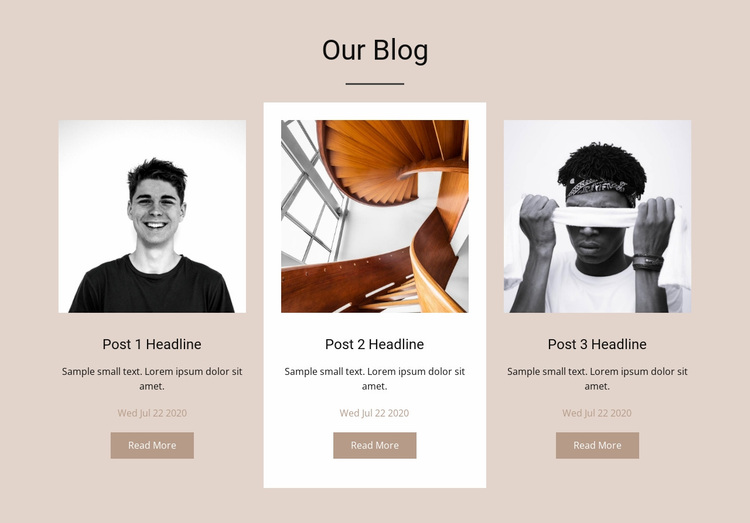Affordable and Skilled Website Design for Small Business Owners
Affordable and Skilled Website Design for Small Business Owners
Blog Article
Top Tips for Developing an Impactful Internet Site Design That Transforms
To accomplish this, one should take into consideration a range of variables, including comprehending the target audience, focusing on individual experience, and optimizing for mobile platforms. The strategic usage of compelling call-to-actions and a distinct visual pecking order plays an important role in guiding individuals with their journey.

Understand Your Target Market
Recognizing your target audience is fundamental to effective website design, as it lays the groundwork for producing an appealing individual experience. Recognizing that your customers are, including their demographics, preferences, and actions, enables developers to customize the internet site's web content, format, and performance to satisfy specific needs.
Conducting extensive market research study is vital in this process. Studies, meetings, and analytics can supply important insights right into user assumptions and discomfort points. By assembling this data, developers can produce user identities that stand for different segments of the target market, making certain that design choices are informed and pertinent.
Furthermore, recognizing the target market helps in picking proper design components such as color pattern, typography, and images that resonate with customers. A website that talks straight to its audience promotes a feeling of connection and trust fund, encouraging longer gos to and greater conversion prices.
Eventually, a user-centered method to web site design not just enhances individual fulfillment but additionally supports business goals by driving engagement and loyalty. By prioritizing the demands and choices of the target audience, a site can efficiently serve its function and attain desired outcomes.
Prioritize User Experience
To boost the total performance of a web site, prioritizing individual experience (UX) is vital (Website Design). A properly designed UX ensures that site visitors can browse the website easily, find information quickly, and involve with material meaningfully. This leads to increased user contentment and greater conversion prices
Begin by implementing instinctive navigating. Menus ought to be practically structured, permitting individuals to locate crucial areas of the website with marginal effort. Consistency in style components, such as color design and fonts, cultivates knowledge, which is critical for keeping individual involvement.
In addition, consider the filling speed of your internet site. A delay of just a couple of seconds can cause considerable drop-offs, as individuals are less most likely to await a slow-loading page. Streamlining images and enhancing code can improve efficiency and preserve site visitors.
Moreover, clearness in content presentation is essential. Use succinct, appealing language and separate text with visuals to enhance readability. By focusing on customer experience, you not just produce an extra pleasurable environment for site visitors yet additionally strengthen your brand's trustworthiness. Ultimately, a focus on UX is a financial investment in the long-lasting success of your web site.
Maximize for Mobile Devices
Optimizing for mobile tools is important in today's digital landscape, where a raising number of users accessibility sites through mobile phones and tablets. A mobile-friendly layout not just enhances individual experience yet additionally plays a considerable function in boosting online search engine rankings. To accomplish this, it is vital to take on a receptive style that automatically readjusts to numerous screen dimensions and orientations.

Loading speed is an additional important aspect; mobile customers are commonly much less client and anticipate rapid access to info. Enhance pictures and take advantage of internet browser caching to boost efficiency. Examination your web site on several tools and display resolutions to recognize and fix any kind of possible usability problems. By focusing on mobile optimization, you guarantee that your website continues to be competitive and efficiently engages a broader audience.
Use Compelling Call-to-Actions
A site's effectiveness typically hinges on its capacity to guide visitors toward desired activities, making engaging call-to-actions (CTAs) essential elements of design. CTAs work as the crucial factors that route why not try here individuals to involve with the website, whether that implies purchasing, enrolling in a newsletter, or downloading and install a resource.
To create reliable CTAs, clearness is paramount. Use concise language that plainly communicates the action you desire the individual to take. Expressions such as "Get Started," "Join Free," or "Shop Now" not only communicate seriousness however additionally get rid of ambiguity. The placement of CTAs is equally crucial; they should be tactically placed throughout the web page to ensure they are easily visible, specifically in high-traffic areas.
Furthermore, consider making use of directional cues, such as arrows or pictures, to guide customers toward these buttons. By concentrating on these components, services can significantly enhance individual engagement, driving conversions and eventually achieving their site's goals.
Concentrate On Visual Hierarchy
Effective site layout depends heavily on a well-structured visual power structure that guides users through web content seamlessly. By organizing components in a way that prioritizes info, designers can enhance user experience and assist in decision-making. This involves making use of dimension, shade, comparison, and spacing purposefully to draw focus to the most critical components of a website.
Using bigger typefaces for headings and subheadings establishes a clear difference between different sections, permitting customers to scan material effortlessly. In addition, employing contrasting colors for switches and calls-to-action can record Extra resources user interest and motivate interaction. Whitespace is an additional necessary element; it prevents clutter and makes it possible for individuals to concentrate on key messages without diversions.
Photos and graphics need to complement the text while additionally adhering to the recognized power structure, reinforcing the general message (Website Design). Uniformity in design components, such as color design and typography, additional reinforces the visual hierarchy, making navigating instinctive

Conclusion
In final thought, effective web site design requires a detailed understanding of the target audience, prioritization of individual experience, and mobile optimization. Inevitably, a well-executed web site style serves as a critical part in driving customer activities and attaining company objectives.
Report this page